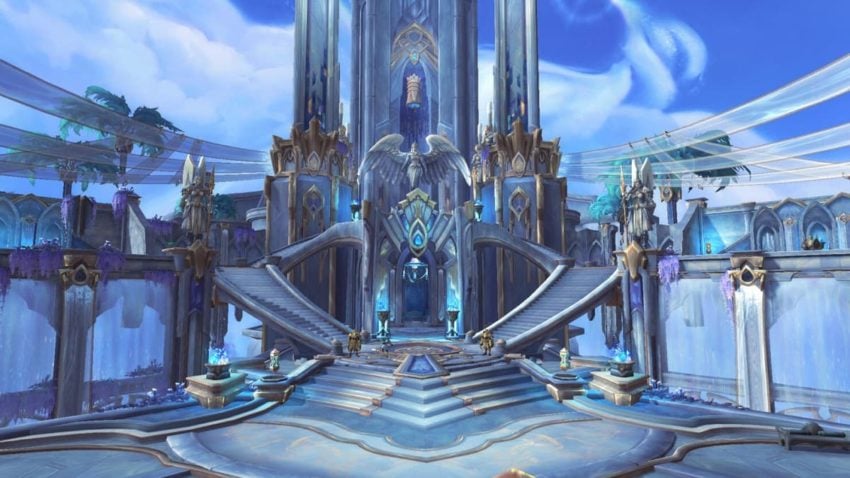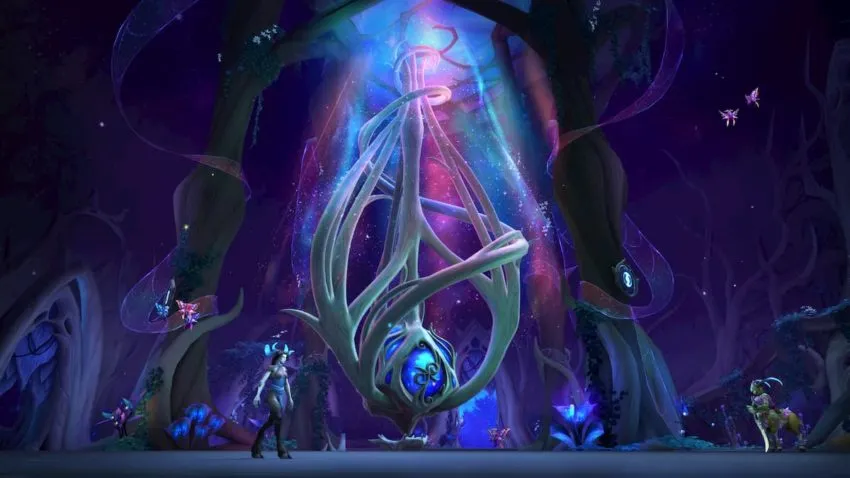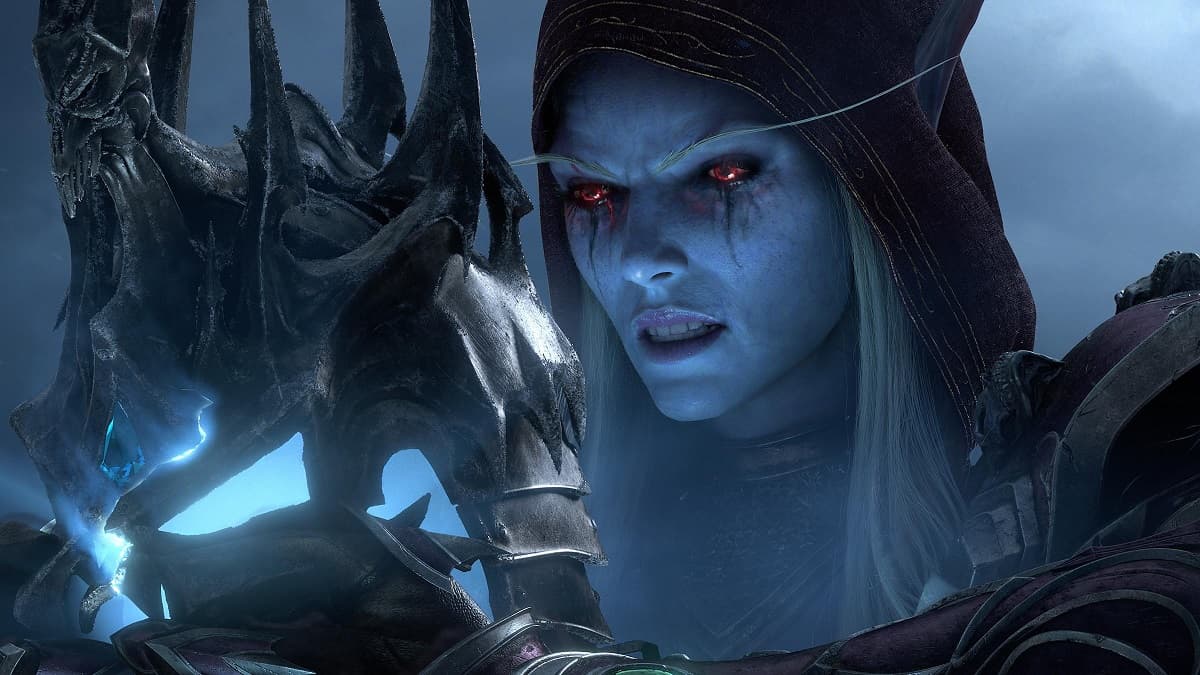“I can hear Azeroth still in pain. We have tae help her!” This is one of the many lines barked by Magni Bronzebeard throughout the 2018 World of Warcraft expansion Battle for Azeroth. While in lore he’s talking about Azerite, a core resource contained within the world of Azeroth and one of the main progression systems implemented into the game, as it turns out, this line may have been a veiled internal distress call to Blizzard. Battle for Azeroth has ended up as one of the worst expansions the long-time MMO has ever seen.
However, this year’s upcoming expansion, Shadowlands, has been cause for both optimism — and concern. By stripping back the divisive features that began in 2016’s Legion and going back to basics, Blizzard is showing that it is listening to the concerns of its long-time players.
However, Blizzard’s erratic decisions in recent years have soured public opinion, and WoW’s subscriber base has continued to decline. A further misstep could mean a significant change in direction, with the influence of partner publisher Activision creeping ever deeper, possibly leading to a streamlined, micro-transaction focused future and the death of World of Warcraft as we know it.
Battle for control

To understand why Shadowlands is so important to the future of the Warcraft franchise, we need to look closer at the failings of Battle for Azeroth.
In terms of the world and instance design, it’s actually not bad. Not every area is enjoyable to quest through (looking at you, Nazmir), but they do at least feel unique from each other. In fact, Drustvar in Kul Tiras is one of the best regions in recent memory. Most of the dungeons and raids, while trash-mob heavy, are enjoyable and include interesting boss mechanics to keep things fresh. The Battle for Dazalor raid proved to be the biggest highlight of the set.
However, as the work on balancing and class design has continued from Legion, class identity has gradually eroded. Many of the skills and abilities that classes utilized began melding into the same reskinned tools, and as such, it has become less about playing a particular class for its strengths and more about simply taking whichever class is consistently topping the role scales for damage and healing.
This by itself may have been less of a concern had the expansion introduced fewer mechanics that rely on randomization. Azerite powers on gear super-charged talents and stats but came with inconsistent power ranges and no information on how often they would trigger those boosts. Loot throughout the dungeons offered such a high variance when it came to the level of power on the Azerite abilities and proc rates that only a few pieces of armor were considered desirable.
As a result, players were required to grind the same raids and dungeons repeatedly — for the same armor piece they’d already dropped, no less — in order to stay competitive. Sure, MMOs come with an expectation that some grind is necessary, but since these pieces of gear could only be earned in a dungeon or raid instance once a week, and with no guarantees of their drop, it meant spending more time searching to acquire equipment than actually enjoying the content.
Later patches added to these random-number elements. Essences (additional powers that you could add to your Heart of Azeroth neckpiece depending on your specialization) and corruptions (heavy power boosts that came with downsides linked to final expansion boss N’Zoth) continued to muddy the waters. When the damage meters state that your own class abilities are causing less damage than external random damage elements, you know that something isn’t right.
All of these changes were introduced throughout Battle for Azeroth’s lifecycle, with the RNG factor leaving too many players feeling unrewarded for their graft. Ultimately, that led to the same lasting feeling left by the expansion overall: dissatisfaction.
Back against the wall

The shortcomings of Battle for Azeroth are perhaps the reason why Shadowlands has received more attention than any World of Warcraft expansion in recent memory. Blizzard itself has acknowledged mistakes when it comes to Battle for Azeroth, and has expressed its desire to put things right in Shadowlands.
The Shadowlands era introduces many new and seemingly popular changes, including an overhaul to the leveling experience to bring relevance back to old expansions, with a level squish making the max level 60, down from 120. Blizzard has streamlined the classes to bring back what makes each feel individual, while phasing out systems that leaned too heavily on RNG. It’s added a rogue-lite style dungeon, which generates new levels and tougher enemies the further you progress. And character customization options have been widely expanded, a long-overdue feature for WoW.
On paper, at least, the efforts being made to bring back the level of quality from an expansion that players have come to expect are plain to see. I’ve previously written about how Blizzard’s well of goodwill is beginning to dry up, but it is at least making the right moves when it comes to its handling of Shadowlands so far.
Another good move was, when it was clear from the impressions of the Shadowlands beta on the Public Test Realm that it wasn’t going to be ready for the original launch date, as noted by Asmongold, arguably the game’s biggest personality, Blizzard delayed the expansion instead of rushing it out. This is something that, in the studio’s early days, it would do regularly if one of its franchises wasn’t reaching its lofty standards.
Out of the shadows

With failures come expectations to bounce back quickly. Partner publisher Activision is not used to franchise failures, and while Battle for Azeroth leads the way in day 1 sales across all expansions, current evidence suggests subscriptions have been falling dramatically, and that includes players who have returned for WoW Classic.
If Shadowlands proves to be more of the same, a dramatic step will be required to keep the series sustainable. While, because of its strong brand value, we’re unlikely to see WoW disappear, or even ever go free-to-play, another poorly received expansion to one of gaming’s biggest franchises could spell the end for the beloved game as we know it, likely opening it further to the creeping influence of Bobby Kotick and Co. at Activision.
If that happens, there’s no telling where Azeroth could be heading next. Here’s hoping that Magni’s SOS was not in vain.







Published: Oct 23, 2020 01:58 pm